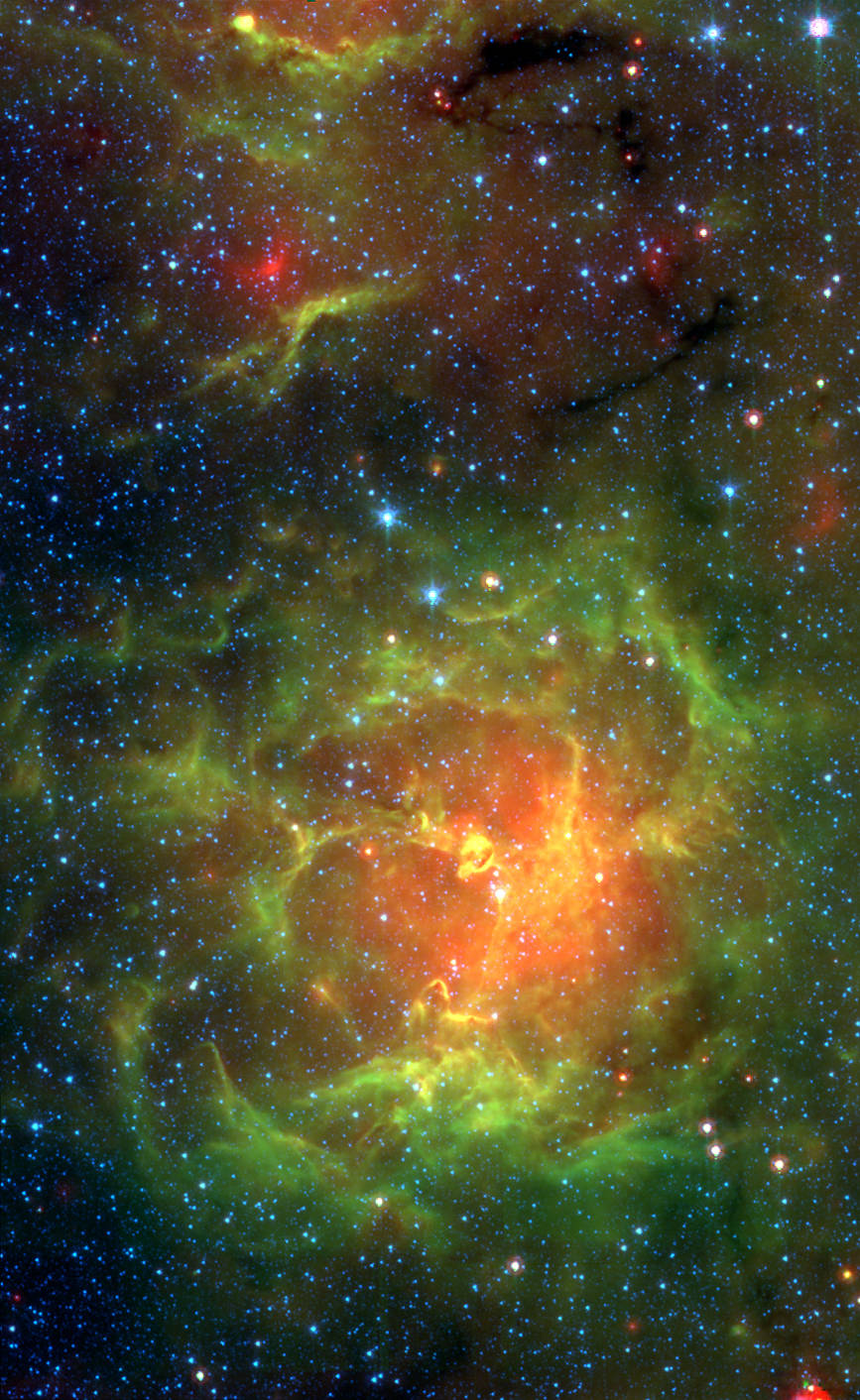
The Trifid Nebula, aka M20, is easy to find with a small telescope and a well-known stop in the nebula rich constellation Sagittarius. But where visible light pictures show the nebula divided into three parts by dark, obscuring dust lanes, this penetrating infrared image reveals filaments of luminous gas and newborn stars.
The Trifid Nebula, aka M20, is easy to find with a small telescope and a well-known stop in the nebula rich constellation Sagittarius. But where visible light pictures show the nebula divided into three parts by dark, obscuring dust lanes, this penetrating infrared image reveals filaments of luminous gas and newborn stars.
This spectacular false-color view is courtesy of the Spitzer Space Telescope. Astronomers have used the Spitzer infrared image data to count newborn and embryonic stars that otherwise lie hidden in the natal dust and glowing clouds of this intriguing stellar nursery.Image credit: NASA, JPL-Caltech, J. Rho (SSC/Caltech)


























